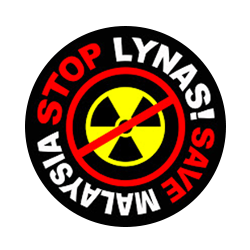Some things just require a higher level of accountability

In one word, radioactive. In two words, Bukit Merah.
Rare earth mining and refining has a unenviable association with serious environmental problems. After the tragedy in Bukit Merah, caused by the lax radioactive waste management by rare earth refiner Asian Rare Earth Sdn Bhd, the Malaysian public is understandably very concerned and demands assurance that radioactive wastes from the Lynas Advanced Materials Plant (LAMP) in Gebeng, Kuantan is properly disposed of.
Lynas has repeatedly maintained it “has successfully met all licence conditions relating to operations and environmental performance” and that it is “strongly committed to open and transparent communication with all our stakeholders”.
Many remain unassured. Why is that?
For starters, after more than five years in operation, Lynas has yet to identify the location of a permanent deposit facility (PDF) for the storage of its radioactive wastes. Neither has there been any public notifications, publications or announcements by the Atomic Energy Licensing Board of Malaysia (AELB) on the issue. Note that the International Atomic Energy Agency (IAEA) in its 2011 report had recommended that a PDF be identified before an operating licence is awarded to LAMP.
Malaysia’s Land Code forbids the usage of any land as PDF of radioactive wastes. As AELB should be keenly aware of that, this indicates the regulator’s acceptance of Lynas’ bold claims that it could safely recycle all its wastes, including the radioactive water leached purification (WLP) waste. Given the nature of radioactive wastes, is that even possible?
Lynas’ engagement with stakeholders is arguably also lacking.
True Lynas has held exhibitions, organised some community activities, and opened its doors for visits from the press and stakeholders. But many questions remain unanswered.
There has been repeated calls for Lynas to have a more in-depth dialogue with stakeholders, such as via a public forum, to address issues of concern, especially its radioactive waste management. Lynas CEO Amanda Lacaze had seemed open to the idea of a public forum after the International Trade and Industry Minister suggested it in 2016, giving the impression it plans to conduct such a forum, “preferably before year-end”.
When the issue of a public forum was pursued again, Lacaze pointed to the company’s website: “Information on our residue management is available in the following sections of our website www.lynascorp.com — Commitments & Responsibilities / Residue Management, and News / Media Briefing at Community Event.” (Note: the website’s layout and sections have changed since.)

Alas, some information found on its website raises even more questions!
Notably, the website does not state the volume of wastes Lynas produces. Formulation of its soil enhancer, called CondiSoil, could not be found either.
In its Radioactive Waste Management Plan (RWMP) submitted on 30 December 2011, Lynas had proposed to recycle all its solid wastes into industrial by-products. It had shared an impressive timeline of R&D and commercialisation over 2012-2015. Key products/applications included plaster board and cement manufacturing, road base, fertilizers, and soil remediation. As CondiSoil now seems to be the sole residue-derived product on its plate, Lynas needs to share more on how this product helps it to recycle its radioactive wastes.
If Lynas is being seen a villain, it has no one to blame but itself. Turning a deaf ear to the repeated requests for a dialogue from the community LAMP is operating in is a demonstration of haughty arrogance at best, or worse, hiding something that cannot stand up to exposure. Given the lack of disclosure and details on CondiSoil, Lynas looks suspiciously like trying to pull wool over the public’s eyes.

Yes legally, Lynas has complied with all the required rules and regulations, for now. AELB concurs.
But morally, Lynas has failed us.
Unless Lynas can assure us to the contrary, it will remain accused of processing rare earths in Malaysia — some 4,000 nautical miles from where they are mined, no less — only so that it can leave us the toxic wastes because its own country does not want them while being handsomely compensated (e.g. 12-year tax holiday) by our own government for the deed! Indeed, the distrust for Lynas has made the people to also distrust the authorities charged with protecting us from radioactive harm. They failed us re Bukit Merah; they could just fail us again — that it the fear.

This educational article is brought to you by SMSL
For more articles, please log in to
SMSL Facebook: Pahang Don’t Need “Hazardous” Project
and SMSL Blogspot: Save Malaysia Stop Lynas
